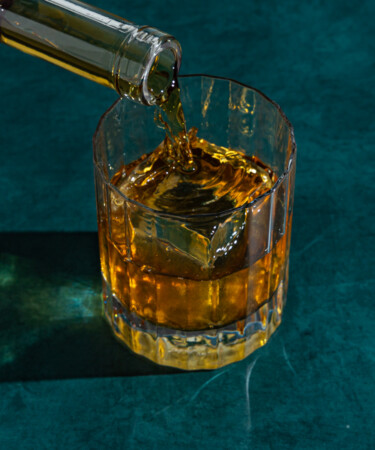While bourbon may today be considered America’s spirit, once upon a time, rye whiskey reigned supreme. Rye has been produced in the United States since the 1800s, when Scottish and Irish immigrants settled on the land now known as Pennsylvania and Maryland. These immigrants, having a taste for whiskey from their homelands, found themselves unable to reproduce the spirit they were familiar with but found they were able to distill whiskey from rye and corn, and thus, rye whiskey was born. By 1810, Pennsylvania was producing and exporting 6.5 million gallons of rye per year, which dwarfs Kentucky’s 2.2 million gallons produced during the same time period.
Of the styles of rye produced in colonial America, two dominated — Pennsylvania, or Monongahela, style rye and Maryland style rye. The two styles were easily distinguishable from one another due to their mash bills, which were reflective of the grains that grew locally as transportation of bulk supplies was an impossibility at the time. As such, the Pennsylvania style reflected high rye and non-existent corn content as the grain is native to lands south of the Mason-Dixon line, which falls right on the border of Pennsylvania and Maryland.
Despite rye’s immense success in the 19th century, the ratification of the 18th Amendment in the United States curtailed the category’s growth and nearly eliminated the existence of rye whiskey as we know it today. By the time distillers were able to produce rye again at the conclusion of Prohibition, whiskey supplies had been completely depleted and rye distillers were put at a competitive disadvantage against bourbon distillers. At the time, those distilling bourbon benefited from a number of advertisements for cheap, unaged offerings which overtook rye as the preferred whiskey among lovers. It wasn’t until the cocktail Renaissance of 2006 that rye would re-enter circulation and regain the respect of whiskey drinkers around the world.
By the time distillers were able to produce rye again at the conclusion of Prohibition, whiskey supplies had been completely depleted and rye distillers were put at a competitive disadvantage against bourbon distillers. At the time, those distilling bourbon benefited from a number of advertisements for cheap, unaged offerings known as white dogs which overtook rye as the preferred whiskey among lovers.
Between 2009 and 2020, rye whiskey production exploded by about 1,500 percent with production increasing from 88,000 cases to 1.4 million in the same time frame. In the United States, to be sold as rye whiskey, a distillate is required to have been made from a grain mixture containing at least 51 percent rye, aged in new charred oak barrels, and be bottled at no more than 160 proof. However, while rye has an overarching distinction provided by the U.S. government, a number of sub-styles exist within the category itself, each of which are important to know — especially considering the spirit’s recent repopularization.
Pennsylvania Style / Monongahela Style
In its essence, Pennsylvania style rye is defined by the complete absence of corn in its mash bill. Instead, the style consists of just rye and malted barley; some distillates from the spirit’s early days contained up to 95 percent rye. Also referred to as Monongahela style after Western Pennsylvania’s Monongahela valley, Pennsylvania style rye is characterized by a lack of sweetness and abundance of peppery spice.
Today, there is heavy interest among rye distillers in revitalizing the sub-category. In an interview with the New York Times, Pittsburgh’s Meredith Meyer Grelli of Wigle Whiskey and Threadbare Cider & Mead commented that her distiller is looking to “help bring back regional flavor, or terroir, to American whiskey and […] pursue first the famous Old Monongahela rye.”
Maryland Style
In contrast to Pennsylvania style, Maryland style rye is notable for the inclusion of corn in its mash bill, resulting in sweeter notes to balance rye’s classic spicy notes. Typically, Maryland style ryes are made from mash bills of approximately 60 to 70 percent rye, 20 to 30 percent corn, and 10 to 20 percent malted barley.
Interestingly enough, George Washington actually had his hand at distilling a rye in the Maryland style at the conclusion of his presidency. Rye whiskey distilled at his Mount Vernon distillery had a mash bill containing 60 percent rye, 35 percent corn, and five percent malted barley and was distilled at least twice before being bottled and sent to distributors.
Kentucky Style
Kentucky style rye can, in some ways, be thought of as the antithesis of Pennsylvania style rye. Rather than using an ultra-high rye mash bill, Kentucky style ryes are characterized by their sweeter profiles which reflect a mash bill of just 51 to 55 percent rye. The remaining mash bill consists of a mixture of both malted barley and corn. In terms of flavor profiles, Kentucky style rye can be compared to high-rye bourbons.
